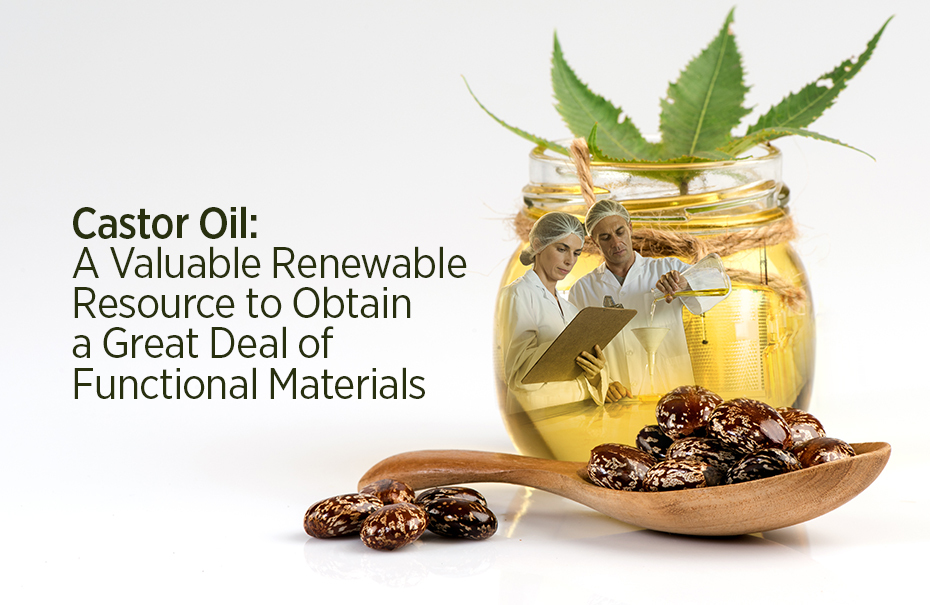The Composition and the Components of Printer Ink

We all know castor oil has multiple uses in various industries but, it will definitely blow your mind when we say there’s blown castor oil in printing ink. Oil in ink? Yes, surprising but true! Allow us to explain in
Printer Ink & Its History
If you are thinking that in the time of digitalization who uses ink? Well, the ink does have an important role to play in our lives and we only realize its importance when we run out of it or fail to get some work done.
When we say ink, the general image that flashes into our mind is of the stain it causes on our shirt. The bluish or black ink that we used in our ink pens is all that we know about inks but there’s a lot more to it. Ink has a lot of variety and today we are going to understand one of its types called Printer Ink as well as its composition.
Ink -a liquid or semi-liquid material, used for writing, drawing, and painting for ages has evolved a lot in terms of its composition. You can trace its history way back to 4500 years ago when the Egyptians and the Chinese invented the first writing ink. Unlike today, the earliest inks had ingredients from all types of materials found in nature, such as vegetable and fruit juices, mixing animal glue and soot from the pine trees, the blood of some species of shellfish, burnt bones, pitch, and tar, secretions from octopi, cuttlefish, squid, and other cephalopods, carbon suspensions in water; stabilized with materials such as egg albumen and natural gums, tannin from tree bark and nuts, etc.
As time flew and technology took over, printing ink underwent a lot of changes and now we have them made of a mixture of ingredients including solvents, colorants (organic or inorganic pigments or dyes), resins, varnishes, and additives including drying agents, waxes, and lubricants.
The Composition of Printer Ink
The recipe of printer ink varies depending upon the need, the company that produces it (HP, Epson, Canon), the surface where the printing will take place, as well as the printing method used. Its process is similar to that of paint production.
Colored dyes/compounds like peacock blue, yellow lake, diarylide orange, and phthalocyanine green go into a liquid base, usually oil; either linseed oil, soybean oil, or petroleum distillate.
Then, carbon black and varnish are combined to make basic black ink. Further, resins, solvents, and other materials that act as binding agents are added to improve the gloss of the ink as well as to protect the printing from wear and tear.
The color shading is adjusted through the addition of white pigments, such as titanium dioxide.
Numerous additives like dispersants, humectants, defoamers, biocides, and bacteriostats, etc., are added to adjust other properties of the ink.
The Components of Printer Ink
Now, let’s peek into the details of its components and what they do to make the printer ink functional.
Varnish – It is the base upon which a printer ink is made. It is a combination of linseed oil or soybean oil, along with resins, solvents, and other materials.
Resins – They are great binders. Not only are they added to bind the ink ingredients together, but they also bind the ink to a printed surface by determining the ink quality of hardness and adhesion. For example, resins, such as alkyds, ketones, acrylics, and formaldehyde, are used on surfaces that are glossy, heat, water, and chemical resistant. There can be more than resin in a particular ink.
Pigments – It is the chief ingredient as it is what provides color to the ink. They are mixed with the varnish to allow the color to spread evenly throughout the printer ink.
Dispersants – They stabilize the particles of pigment by lowering the mechanical energy necessary for grinding and allowing the ink to flow well so that the transition towards the surface during printing happens smoothly.
Apart from these, there are other notable ingredients that have a role to play in the process of ink-making to improve its function and they are:
- Humectants to slow down the aging process of ink and keep it fresh.
- Defoamers to keep out unwanted air bubbles and the efficiency of the foam.
- Wetting agents to control various properties of the surfaces.
- Amine derivatives as pH modifiers and to dissolve some resin binders.
- Biocides and bacteriostats to prevent the growth of bacteria and fungi.
- Opacifiers to make the ink opaque, covering a given surface,
- Extenders to make base pigments appear less intense.
- Lubricants to provide rub and mar resistance.
- Surfactants to improve ink printability.
- Drying agents to allow the print to bind to the printing surface and dry faster.
Now since there is a lot of involvement of chemicals in the making of ink, and it being in a semi-liquid state, it is important to have heat or water-resistant properties. Hence, some specialized ingredients like blown castor oil are added to it as they act as water fighters in heatset and offset printing inks.
Derived after oxidative polymerization, Blown Castor Oil (BCO) (also known as oxidized castor oil, polymerized castor oil, caster stand oil) is prepared further by blowing air or oxygen into castor oil at various temperatures of 80-1300C which stabilizes the ink emulsion, reducing water pickup while maintaining viscosity.
The golden yellow to a honey-colored viscous liquid thus obtained has increasing viscosities resulting from oxidative and cross-link polymerization at the double bonds and hydroxyl group and hence is used to plasticize a variety of resins in adhesive and sealant systems, inks, and hot melts.
Know Your Ink
The market is flooding with several types of printing inks available, for example, solvent-based, water-based, digital as well as UV inks just to name a few of them. They are almost processed with similar ingredients, but the type of raw material used and also their quantity depending on the print method varies, hence when picking one, make sure the idea behind the particular ink is pretty clear in your mind.
Various industrial sectors approach us, Ambuja Solvex for a reason because our castor oil products are 100% pure, untouched, and genuine that you can buy, try, and see the results for yourself which is why we are known today to be the best-ever blown castor oil manufacturers in India.



